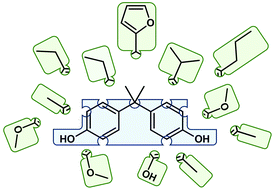A guide towards safe, functional and renewable BPA alternatives by rational molecular design: structure–property and structure–toxicity relationships†
Abstract
Over the last few decades extensive research gave unambiguous evidence for the endocrine disrupting nature of bisphenol A (BPA), which has been an indispensable precursor in polymer chemistry since 1946. Unfortunately, current alternatives (e.g., bisphenol F and bisphenol S), are as endocrine active as BPA, emphasizing the need for a more multidisciplinary approach to design BPA alternatives, including a preliminary toxicity screening of the endocrine disrupting character in addition to performance screening. Moreover, the current topical transition towards a circular- and bio-economy stresses to adopt renewable resources to produce future chemicals and materials. To enable, inspire and stimulate the design of safer, functional and renewable BPA alternatives, this review gathered all research concerning bio-based bisphenol structures, their performance and in vitro oestrogenic activity. As a key structural feature providing high-performance polymer properties, only bio-based bisphenols with a diphenylmethane core scaffold, published in peer-reviewed papers, were included in this study. This focus revealed valuable structure–property and structure–toxicity relationships, providing the fundament for rational design of safe bisphenols.

- This article is part of the themed collection: Sustainable Polymers


 Please wait while we load your content...
Please wait while we load your content...